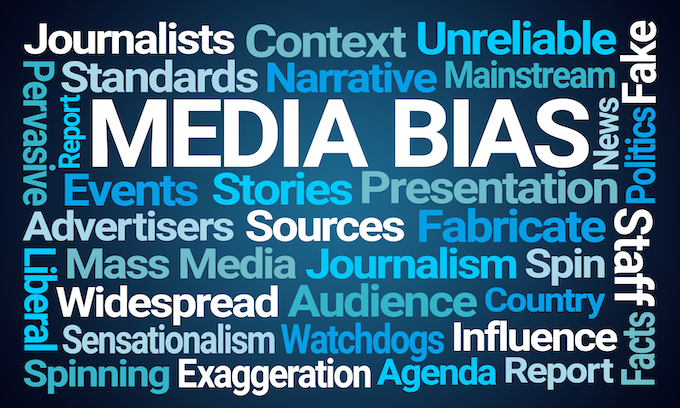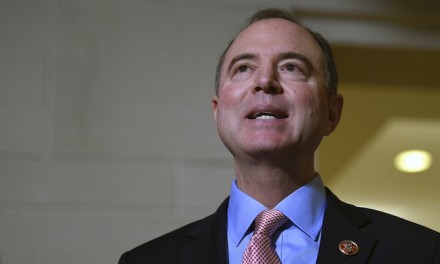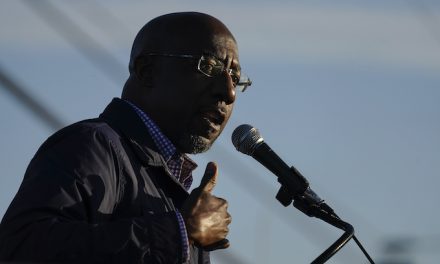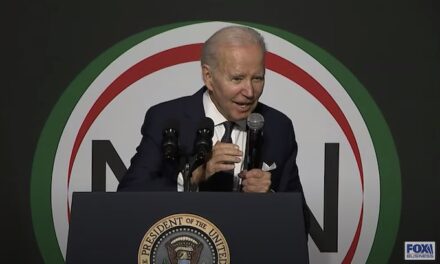The terrible election results for Democrats are going to lead to some terrible conclusions. One may be the assumption that these bad results reflect a media that’s too hostile to the Democrats.
Greg Sargent of The Washington Post tweeted this lame summary from former Obama aide Dan Pfeiffer: “Republicans have a massive communications advantage … (Glenn) Youngkin used the right-wing media to communicate his MAGA credentials to the base without offending Independents and Trump-skeptical Republicans.”
When Democrats lose, they say crazy things. Pfeiffer is saying with a straight face that Republicans have “created a powerful, self-serving media infrastructure,” and apparently the Democrats have nothing resembling a Democrat media.
The night after the election results, I was pleased to be invited to join the Paley Center’s Media Impact panel on Zoom to discuss media coverage of the Biden White House. We began with the notion that no politician ever thinks the press is fair to them. This is true, but is largely meaningless. Republicans expect aggressive unfairness. Democrats expect cheerful compliance.
Mollie Hemingway of The Federalist announced that the press under Biden had transformed from “cartoonish hostility to gentle sycophancy.” That’s quite right. I said it changed from “frenzied resistance” to “assistance.” The media has reverted to helper mode. Under former President Donald Trump, they were dedicated to exposing the rot. Under President Joe Biden, they are dedicated to explaining the plans.
Former Trump press secretary (and author and Newsmax host) Sean Spicer ably explained that the media has crossed a line from telling stories with facts to offering their incessant opinions and analysis. He said the difference in reporter tone between a Spicer briefing and a Jen Psaki briefing is “embarrassing,” and the difference is “not debatable.” Under Trump, “it was advocating why he was wrong, and under Biden, it was why he was right.”
New York Times opinion editor Patrick Healy bizarrely denied there had been a “reset” in the media’s orientation under Biden. He even denied Biden had a traditional honeymoon period with the press, that instead there was a continuation of aggressive coverage because of the Jan. 6 riot. There was intense coverage of violent Trump fans and Trump’s election denials, but not of Biden.
But then Healy claimed something I could not abide, that no national media organization today “can really survive … if you’re not telling the story in a good-faith way on people of both sides.”
In reality, the Times and The Washington Post paraded about in the Trump years telling bad-faith stories about Republicans, under pompous slogans such as “The truth is more important than ever” (the Times) and “Democracy dies in darkness” (the Post). I said they quite obviously sought to build an anti-Trump subscriber base. I said, “I don’t think anybody believes that The Washington Post and The New York Times are here to represent all of us.”
Healy shot back: “Tim, what do you have against democracy? What do you have against truth? I don’t understand you,” and then he smiled. The point he was missing, probably on purpose, was that these slogans announced, “We are democracy and truth. You Republicans are dictatorship and lies!” Humility is not in their marketing plan.
At the end, we were asked how the press could improve its approach. Conservatives hesitate at the notion that the liberal media would truly seek to build trust if it means an attempt to give more of a fair shake and equal time to the (evil) Republicans. They are committed to making the world “a better place” by their lights, and stick to the Lester Holt mantra that “Fairness is overrated.”
Tim Graham is director of media analysis at the Media Research Center and executive editor of the blog NewsBusters.org. To find out more about Tim Graham, and read features by other Creators Syndicate writers and cartoonists, visit the Creators Syndicate website at www.creators.com.



















The one thing we all can count on is: That Democrats Lie. Lies are the Democrat’s native language.
“When Democrats lose, they say crazy things. Pfeiffer is saying with a straight face that Republicans have “created a powerful, self-serving media infrastructure,” and apparently the Democrats have nothing resembling a Democrat media.”
Democrats and the Democrat Party never take responsibility or are held accountable for their own unlawful, destructive, dishonorable, immoral agendas and actions. Democrats always blame someone or something else for their own actions.
We all know that 80% of the media is controlled, supported and owned by Democrats and have “created a powerful, self-serving media infrastructure,” that constantly broadcasts the socialist Democrat Party’s political Lies/propaganda,
“A Banker (or Politician) is a fellow who lends you his umbrella when the sun is shining, but wants it back the minute it starts to rain” – Mark Twain
It’s finally raining on the main stream media and they are acting like true politicians who love to take take their money to the bankers, but now that its raining on Socialist programs the same Democrat Congressmen or media maven who wants to keep their jobs will take back their umbrellas of support from a soaked and wet hair drenched Pelosi whose hairy programs even Joe will no longer want to sniff.
Lying is SO INHERENT in the DNA of dems, i honestly think they have NO CAPACITY TO NOT lie.
They certainly SHOULDN’T have Media support. Are eyes starting to open in the Media—even if only slightly?
“When Democrats lose, they say crazy things. Pfeiffer is saying with a straight face that Republicans have “created a powerful, self-serving media infrastructure,” and apparently the Democrats have nothing resembling a Democrat media.”
Perhaps it is the content and accuracy of what is reported by Conservative Media as opposed to Mainstream Media—and people are catching on to that. The Left has relied upon lies and distortion as their “truth” for so long that they do not recognize real truth when it is right before their eyes.
When it comes to the liberal media, “The man who will not read has no advantage over the man who cannot read”,,,and a media that never gets read and who will not remember what and who made America great, has no advantage over the Biden President who cannot remember, or a Kamala who can but refuses to remember, both of whom will leave office as failures. Those who speak the truth never have to worry about remembering anything for truth and results speaks for itself.
Men will do many thing to get loved, and corrupt medias will ALL things to get their man elected, up to the point where getting their man elected puts they, their jobs and their socialist ideology in jeopardy. When joe gets thrown and crushed under the bus it will be his own media at the wheel.
That is why for years, i’ve wanted to YANK the FCC license for MSNBC, CNN, CBS, ABC, and NBC, and then DO THE SAME to the wa po, and other libtard ridden news papers….. Assuming of course, there IS A FCC license version FOR print media.
Really!!! The media has done nothing to provide America with the truth. All they ever spew is trash, lies, deception and promotion of the most evil and corrupt political party ever created. They just cannot digest the fact that they have placed themselves in the recycle bins and now they are realizing they are not even recycleable they are just place trashy useless dung. **** in your own backyard and you will eventually step in it. As you can see it has already been brought into the House!
Even FOX is going leftist..
95% of media are snarling junkyard pit bulls biting at Republican Presidents but turn into slavering lapdogs for Dem Presidents. Any idiot pretending otherwise should be broadcast live watching late night TV news, then all the talk shows and ring a bell every time a pro-Republican voice is heard. He’d be standing there like a paralyzed dummy in plain sight unless he could abide watching Fox.
Why haven’t we been hearing from the over made up, over opinionated, over self rated, over botox injected, under talented and over self valued holly-would elitists who have berated everyone including Jesus. Have they lose their big mouth propensity to talk out their ****s? Or have they just lost the taste for being ignored?